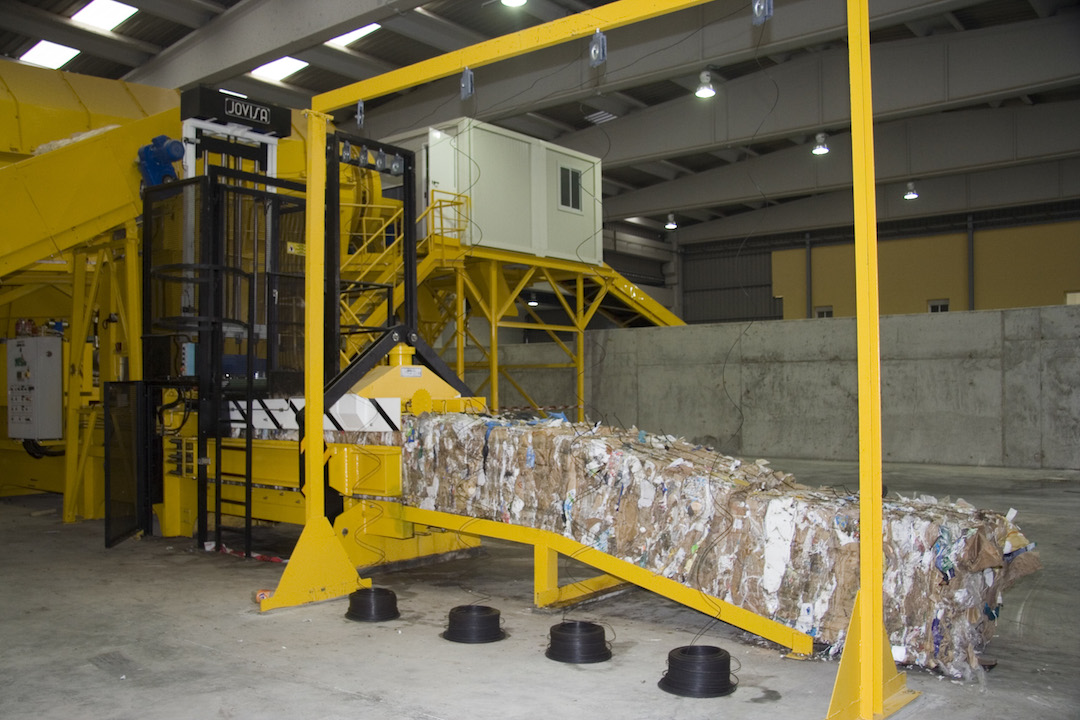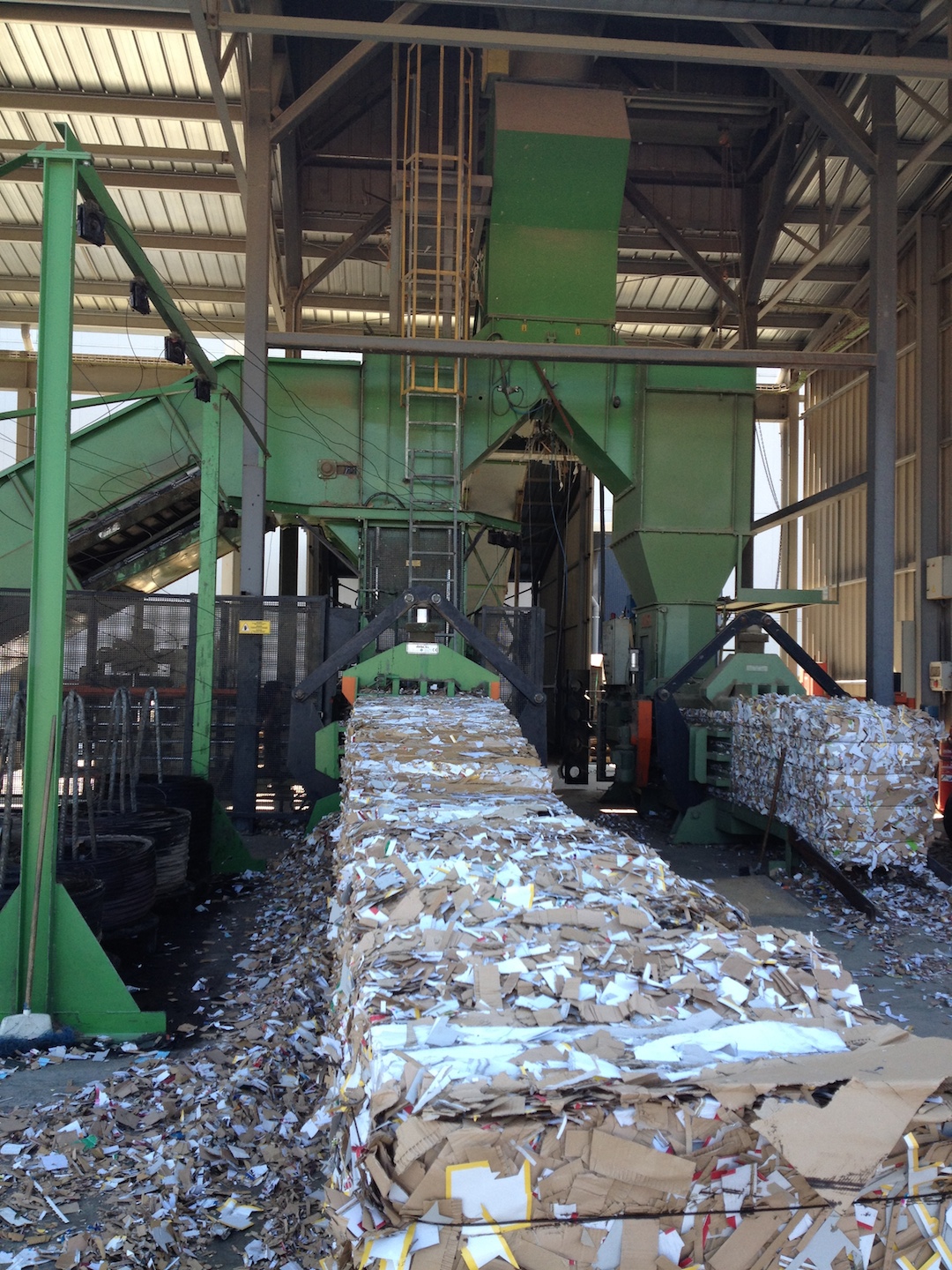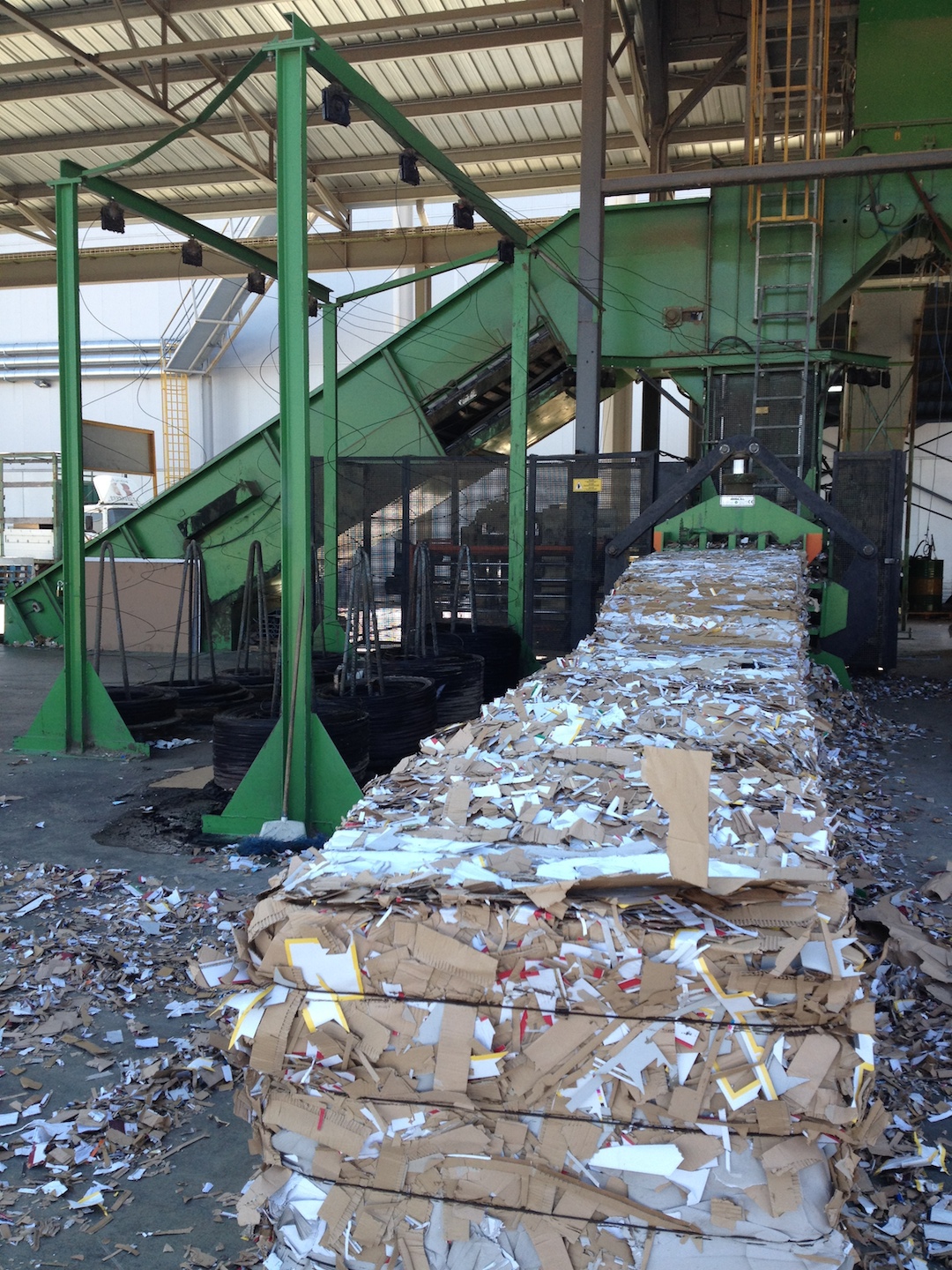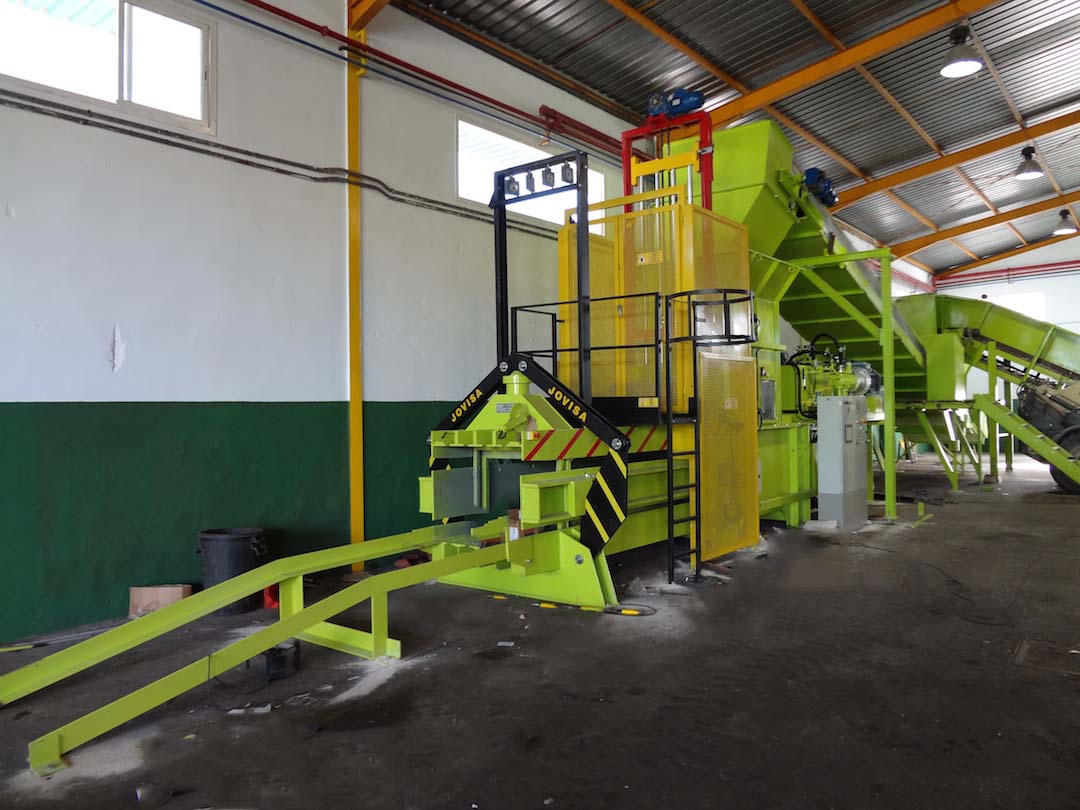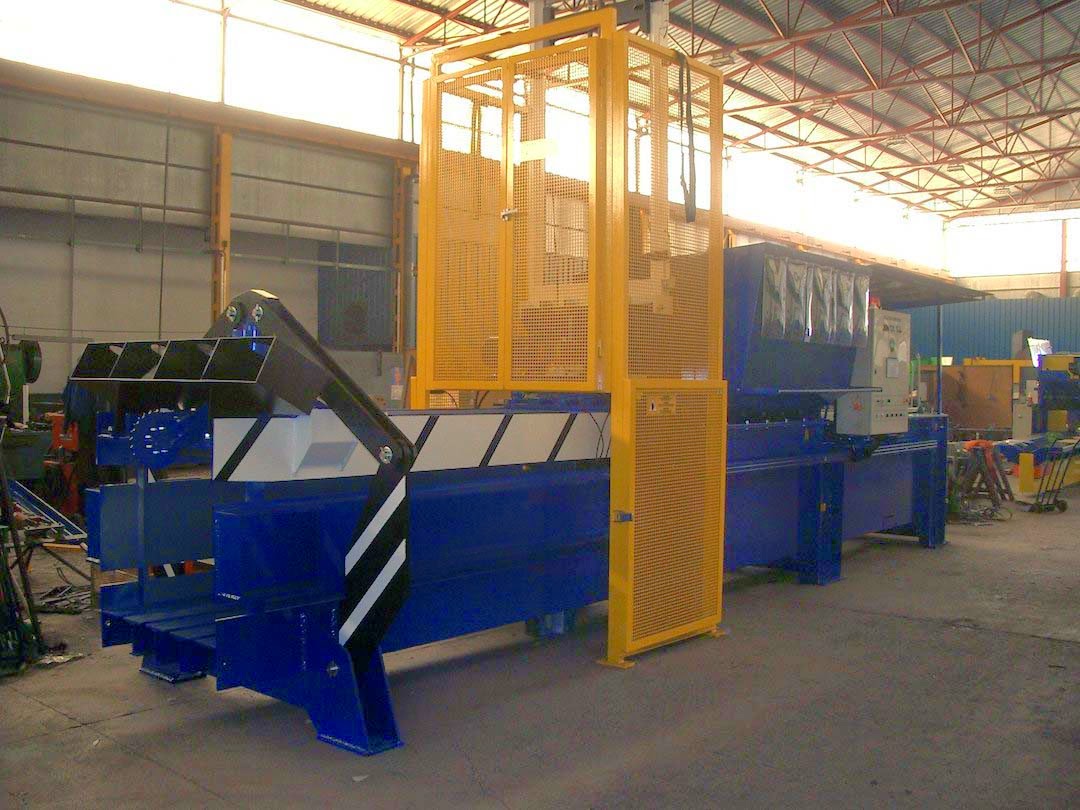Products > Paper and Cardboard > Horizontal presses > Standard Presses
| DESCRIPTION | UNITS | JS-1000VL/45 | JS-1000VL/60 | JS-1000VL/75 | JS-1000/Contenedor |
|---|---|---|---|---|---|
| Force of pressing | Tn | 45 | 60 | 75 | 75 |
| Main motor | CV/Kw | 30/22 | 50/36.8 | 60/44.1 | 60/44.1 |
| Nº hydraulic pumps / Type | ————– | 1/Variable flow | 1/Variable flow | 1/Variable flow | 1/Variable flow |
| Section of bale | mm | 800×1000 | 800×1000 | 800×1000 | 720×1000 |
| Section of hopper | mm | 1600×1000 | 1600×1000 | 1600×1000 | 1600×1000 |
| Volume of theoretical baling | m3/h | 133 | 153 | 156 | 144 |
| Theoretical production according calculations with density 50 Kg/m3 | Tn/h | 6’6 | 7’6 | 7’8 | 7’2 |
| Position of tying device | ————- | Lateral / Vertical | Lateral / Vertical | Lateral / Vertical | Vertical |
JS-1000V/35
This baler can process any type of waste but is best suited for supermarkets and large stores. The main reason is that it is competitively priced. It is suitable for supermarkets that continuously generate waste cardboard and plastic. The feed hopper is a generous size enabling the processing of large sheets of cardboard, still producing high density bales. The baler has the capacity to be continually fed.
This machine can work in automatic and it can adapt to an automatic system of feeding.
JS-1000/60 MOBILE
The baler robust and reliable, it can to work in an aggressive environment. It is very practical for baling in areas where they need mobility. This machine adapts perfectly to the agricultural sector which requires the recovery of pruning’s, cultivation waste and the collection of woody crops, etc.
This machine has the standard characteristics of a normal baler, it presents some excellent productive capacities and can be fitted to the chassis of a lorry.
JS-2000VL/350
This is a large baler. It has both tying configurations: horizontal and vertical, dependent on the design required. This machine has the main characteristics of large standard balers. It has a reinforced heavy duty chassis unlike other balers machines, and due to the large capacity for baling it can develop up to 350 Tm of force.
This machine is designed to produce waste with highly compacted bales which maintain their density when tied and exited from the baler.


